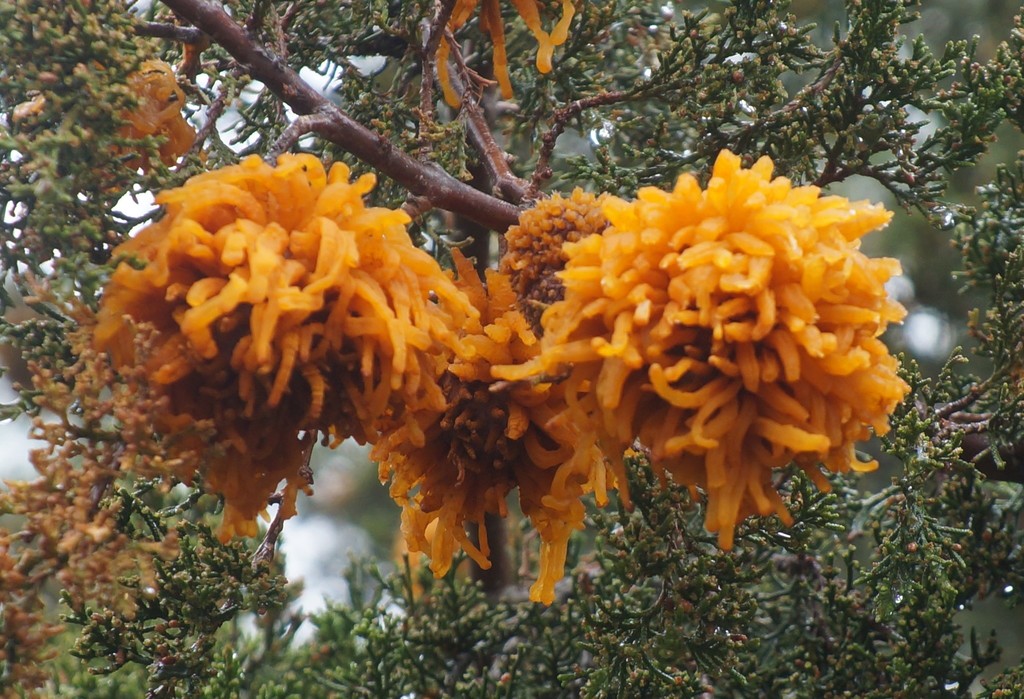Eastern redcedar has
- scale leaves,
- needle like leaves on young growth
- blue "berries" that are actually cones
- shaggy bark
- narrow tree-shaped growth habit
 |
| typical scale-like foliage. often somewhat upturned. Notice the twigs are somewhat scaly too |
 |
| typical fruit. They are lumpy, unlike actual berries. They have a gray coating on them The fruits are edible, usually ground as a spice for meats or to flavor gin. |
 |
| A young tree just starting to switch from needle foliage to scale foliage |
 |
| very young trees are often but not always purple and have needle foliage. |
 |
| Male cones are brown and about a quarter inch long on tips of branchlets. |
 |
| Mature foliage is often yellow green. |
 |
| Somewhat typical shape of a larger tree |
 |
| bark is finely shreddy |
 |
| bark frequently has white patches of redcedar crust fungus (Dendrothele nivosa) in fact I don't think I've seen a mature redcedar without it. |
 |
| twigs year round can have galls of cedar apple rust (Gymnosporangium juniperi-virginianae) |
 |
| In April the cedar apple galls grow long, orange telia which make spores that then infect apple trees |
 |
| orange patches directly on twigs in spring are probably cedar-quince rust (Gymnosporangium clavipes) |
Eastern Red cedar is probably most easily confused with common juniper (Juniperus communis). It is uncommon in NJ, mostly only seen in plantings. It never has the scale foliage, only the needle foliage. It is generally sprawling rather than tree-like. There are lots of horticultural Juniperus varieties, that likewise lack the scales.
 |
| This is common juniper to compare. |
 |
| This is Atlantic White Cedar to compare. |
Arborvitae (Thuja occidentalis) is a very, very common horticultural tree in NJ. It has very flat, scaly foliage and cones that are brown, scaled, small, and vase-shaped.
 |
| Arborvitae to compare |









